In the diverse world of mammals, one animal stands out as truly exceptional—the platypus. This remarkable creature defies conventional classification by possessing characteristics that seem to belong to different animal groups altogether. When European naturalists first encountered a preserved platypus specimen in the late 18th century, they suspected it was a hoax—a taxidermist’s practical joke combining parts from different animals. However, the platypus is indeed real, and its unusual biology continues to fascinate scientists today. As the only known mammal that both lays eggs and produces milk for its young, the platypus represents an evolutionary marvel that bridges the gap between reptiles and mammals.
The Extraordinary Platypus: Defying Classification

The duck-billed platypus (Ornithorhynchus anatinus) belongs to a small group of mammals called monotremes. While nearly all other mammals give birth to live young, monotremes—which include only the platypus and several species of echidnas—lay eggs instead. This reproductive strategy more closely resembles that of reptiles and birds than typical mammals. Despite this seemingly non-mammalian characteristic, the platypus still produces milk to nourish its hatchlings, firmly establishing its place among mammals. This unusual combination of traits makes the platypus a living example of evolutionary transition, providing scientists with valuable insights into mammalian evolution.
Evolutionary History and Significance
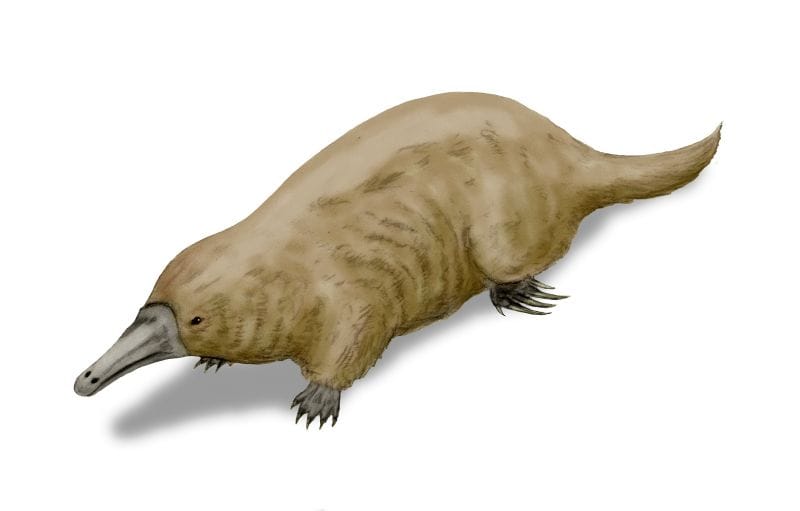
The platypus belongs to an ancient lineage that diverged from other mammals approximately 166 million years ago, during the Jurassic period. This early branching from the mammalian family tree occurred before the split between marsupials and placental mammals, making monotremes the most primitive group of living mammals. Fossil evidence suggests that the platypus’s ancestors have changed relatively little over millions of years, retaining many primitive characteristics while developing their own unique adaptations. This evolutionary stability, combined with their unusual mixture of features, makes the platypus invaluable for understanding how mammals evolved from reptilian ancestors. In 2008, scientists sequenced the platypus genome, revealing a fascinating mixture of reptilian, avian, and mammalian genes that reflects its unique evolutionary position.
The Egg-Laying Process
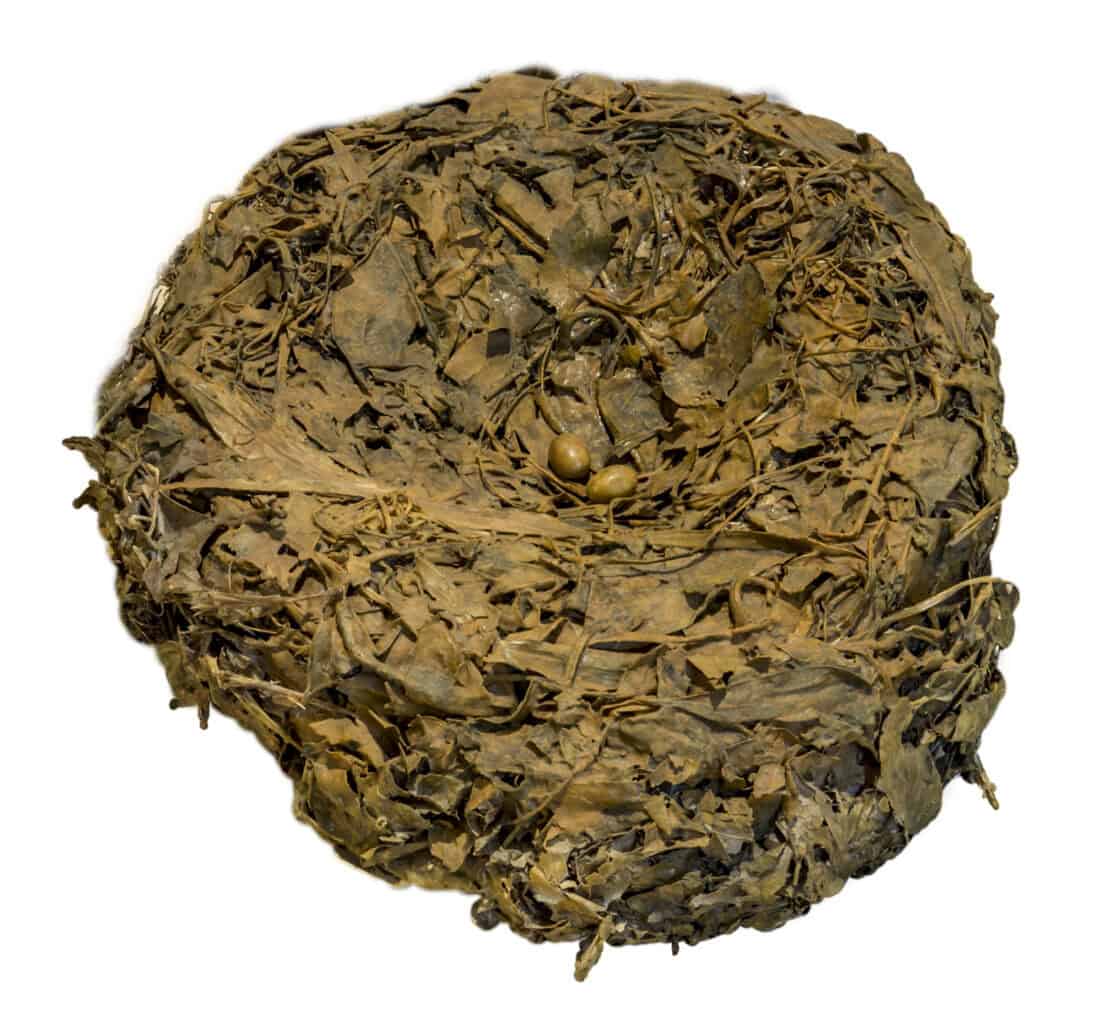
Female platypuses typically lay one to three small, leathery eggs approximately 28 days after mating. Unlike the hard-shelled eggs of birds, platypus eggs have a soft, pliable shell more similar to reptile eggs. Before laying her eggs, the female platypus constructs an elaborate underground burrow up to 20 meters long, with a nesting chamber lined with wet leaves and reeds carried in with her tail. Rather than sitting directly on her eggs like birds, the female platypus curls around them, holding them against her body with her tail to maintain proper incubation temperature. The incubation period lasts about 10 days, significantly shorter than most bird eggs. When they hatch, the young platypuses (called “puggles”) are tiny—only about 15 millimeters long—and completely helpless, with closed eyes and no fur.
Milk Production Without Nipples

Perhaps one of the most unusual aspects of platypus biology is how females provide milk to their young. Unlike other mammals, female platypuses don’t have nipples. Instead, they have specialized milk patches or areolae on their abdomen where the milk is secreted directly through the skin. The puggles lap or suck the milk from their mother’s fur and skin. This milk is highly nutritious, containing proteins and antibodies crucial for the development of the young. The composition of platypus milk has attracted significant scientific interest, as it contains unique antimicrobial proteins that could potentially inspire new antibiotics for human medicine. These special proteins may have evolved to protect the vulnerable young from infections, as the milk is exposed to the environment rather than delivered directly from nipple to mouth as in other mammals.
Physical Characteristics and Adaptations
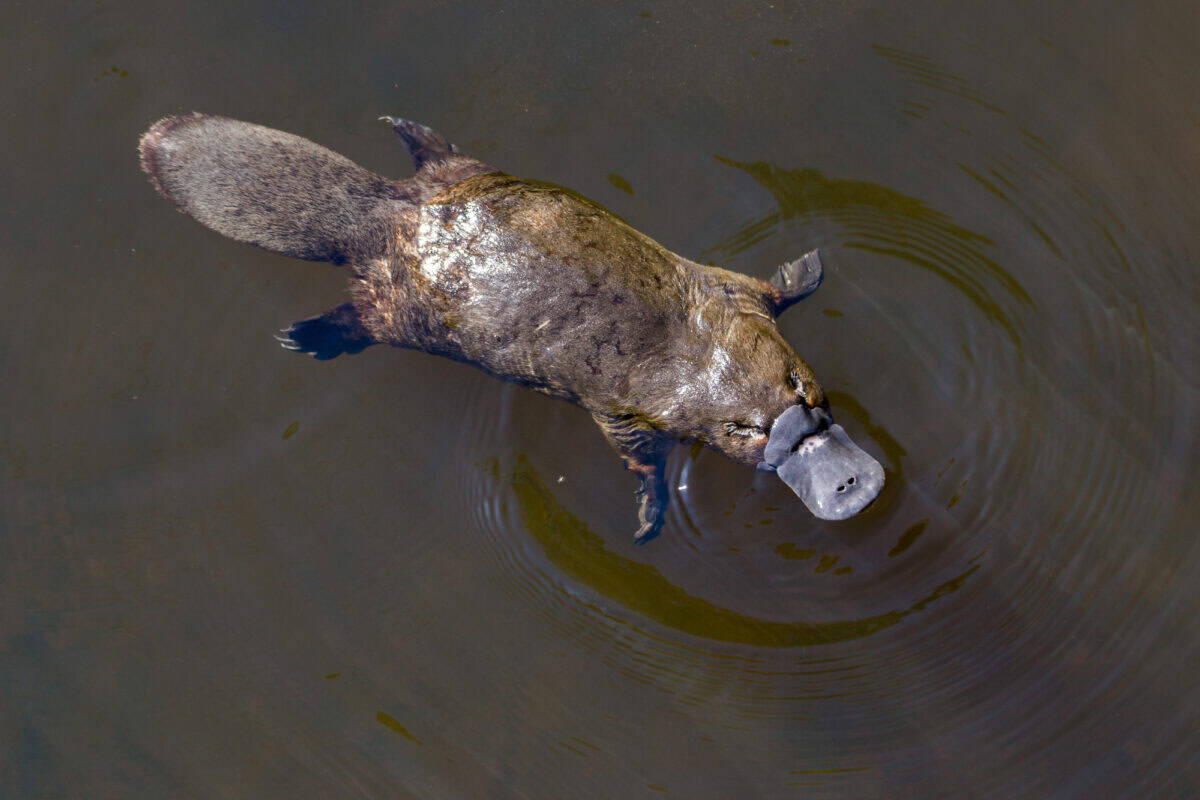
The platypus’s appearance is as unusual as its reproductive biology. Adults typically measure 40-50 centimeters in length and weigh between 0.7 and 2.4 kilograms, with males being larger than females. Their bodies are covered in dense, waterproof fur that ranges from dark brown to reddish-brown on the back and sides, fading to a lighter tan or yellow on the belly. The most distinctive feature is their duck-like bill, which is actually a soft, flexible sensory organ covered with thousands of electroreceptors and mechanoreceptors. These receptors allow the platypus to detect the tiny electrical fields generated by the muscle movements of their prey and to sense movement in the water. Their broad, flat tails store fat reserves, while their webbed feet make them excellent swimmers. Males also possess venomous spurs on their hind ankles—making the platypus one of the few venomous mammals in the world.
Habitat and Distribution
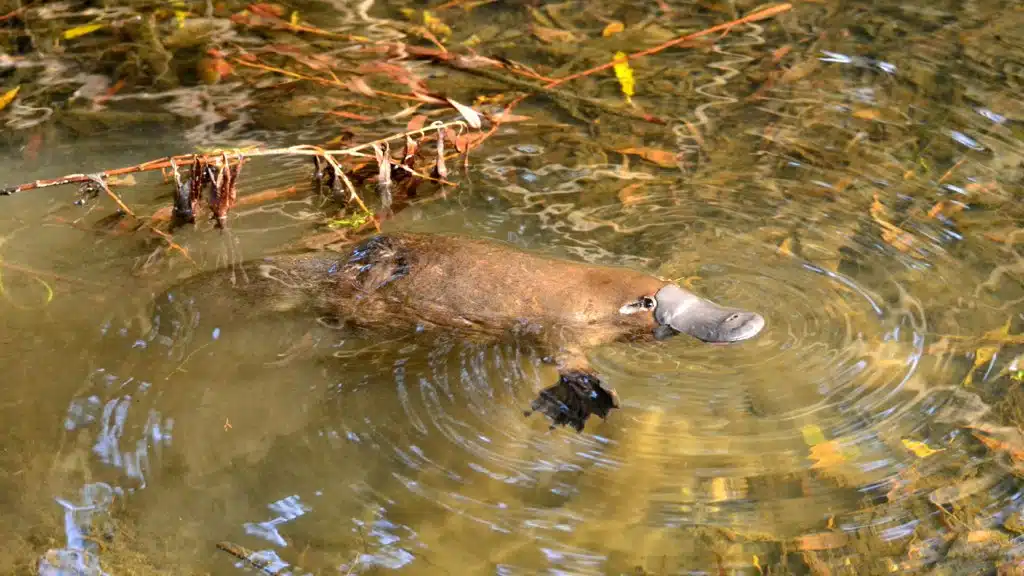
Platypuses are native exclusively to eastern Australia, including Tasmania. They inhabit freshwater systems such as rivers, streams, and lakes with earth banks where they can build their burrows. These semi-aquatic mammals prefer slow-moving water bodies with depths sufficient for diving but shallow enough to allow them to reach the bottom while foraging. The platypus’s ideal habitat includes overhanging vegetation and submerged logs, which provide cover from predators and support abundant invertebrate populations. Although once widespread throughout suitable habitats in eastern Australia, platypus populations have declined due to water management practices, drought, habitat degradation, and introduced predators. The species now faces increasing conservation challenges, particularly with climate change affecting water availability in many parts of their range.
Feeding Behavior and Diet
The platypus’s feeding strategy is as unique as its appearance. They are primarily nocturnal, spending up to 12 hours each day hunting underwater for food. When diving, they close their eyes, ears, and nostrils completely, relying entirely on their bill’s electroreceptors to locate prey. A typical platypus diet consists mainly of bottom-dwelling aquatic invertebrates, including insect larvae, freshwater shrimp, crayfish, and worms. During a feeding dive, which typically lasts between 30 seconds and one minute, the platypus scoops up both prey and substrate materials in its bill. It stores this mixture in special cheek pouches and returns to the surface, where it grinds the food using specialized grinding pads in its mouth (as platypuses lack teeth as adults). A single platypus can consume up to 20% of its body weight in food each day, requiring them to spend significant time foraging to meet their energy needs.
The Venomous Spurs

Male platypuses possess a feature that makes them even more extraordinary among mammals—a pair of sharp, hollow spurs on their hind ankles connected to venom glands. The venom is produced seasonally, reaching its highest potency during the breeding season, suggesting its primary purpose is competition between males for territory and mates rather than defense against predators. The venom contains a complex mixture of proteins and peptides, some of which are unique to the platypus. While not lethal to humans, a spur wound can cause excruciating pain that can last for weeks or even months, and conventional painkillers provide little relief. The pain is often accompanied by rapid swelling and can lead to hyperalgesia (increased sensitivity to pain) in the affected limb. Scientists studying platypus venom have identified compounds with potential applications in pain management, as understanding how these toxins work could lead to the development of novel analgesics.
Social Structure and Behavior
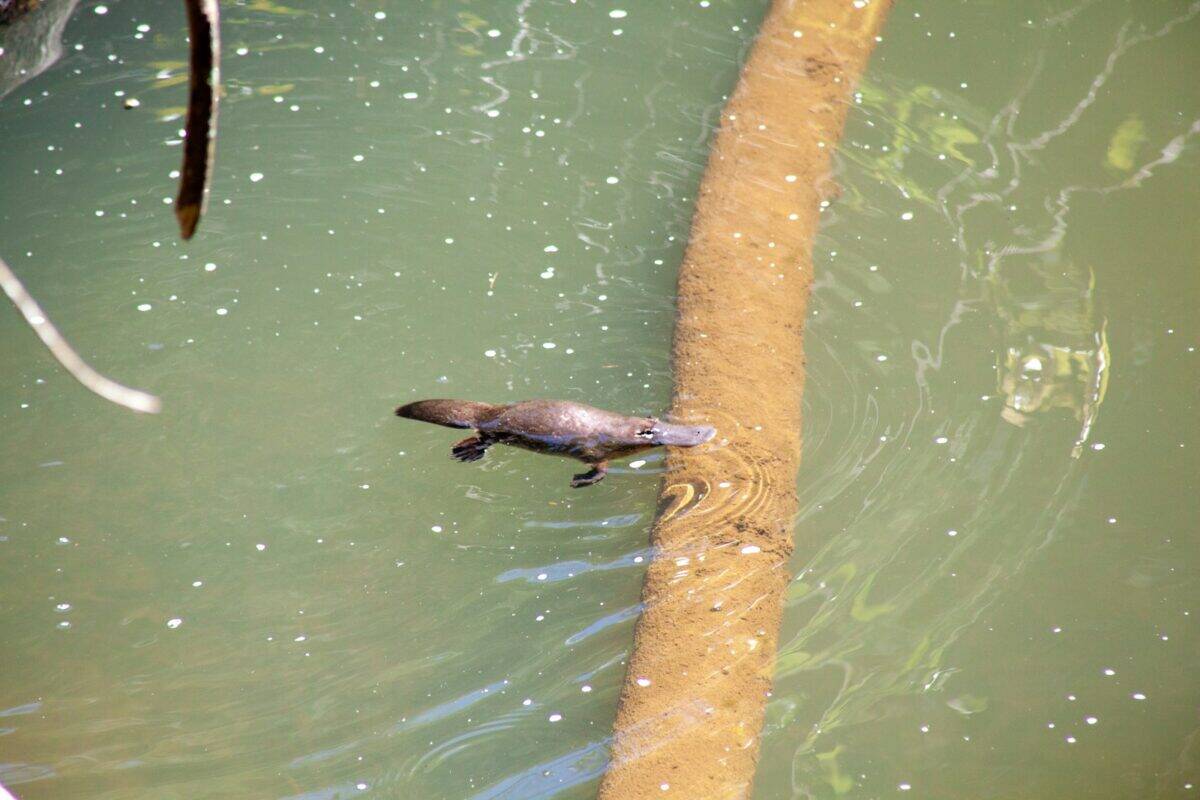
Despite decades of study, much about platypus social behavior remains mysterious due to their nocturnal, semi-aquatic lifestyle. Generally solitary animals, platypuses typically interact with others only during the breeding season. They maintain individual territories, with a single animal’s range extending up to several kilometers of waterway. Males appear to be territorial and competitive, using their venomous spurs during aggressive encounters with other males. Communication between platypuses is limited; they lack vocal cords and make few sounds beyond occasional growls when disturbed. During courtship, which typically occurs in late winter and spring, males and females perform an elaborate underwater dance, circling and touching each other before mating. After mating, the female constructs her nesting burrow alone, and males play no role in raising the young. Young platypuses remain in the burrow for three to four months before emerging and becoming independent.
Scientific Importance and Genomic Insights

The platypus genome, first sequenced in 2008, has provided extraordinary insights into mammalian evolution. The animal’s DNA reveals a fascinating mosaic of reptilian, avian, and mammalian genetic elements that reflect its unique evolutionary position. For example, the platypus possesses genes associated with egg-laying that are similar to those found in birds and reptiles, alongside genes for milk production found in all mammals. The platypus genome contains ten sex chromosomes (compared to two in most mammals), and their sex determination system differs significantly from that of other mammals. Perhaps most intriguingly, the genome includes genes for proteins involved in both venom production and milk production that appear to have evolved from the same ancestral gene. This suggests that venom and milk proteins in the platypus share an evolutionary origin—a discovery that was completely unexpected and highlights how studying unusual species can provide new perspectives on biological processes.
Conservation Status and Threats

While the platypus is currently classified as “Near Threatened” by the International Union for Conservation of Nature (IUCN), recent research suggests its situation may be more precarious than previously thought. Population declines have been observed across much of the species’ range, with local extinctions occurring in some areas. The primary threats to platypus survival include habitat destruction and fragmentation, water management practices that alter natural flow regimes, drought exacerbated by climate change, entanglement in fishing gear and yabby (crayfish) traps, and predation by introduced species such as foxes and feral cats. Water pollution, particularly from agricultural runoff, mining, and urban development, also poses significant challenges. River regulation through dams and weirs creates barriers to platypus movement and reduces breeding opportunities. Conservation efforts focus on habitat protection and restoration, improved water management, and public education about threats such as illegal fishing nets and traps that can drown platypuses.
Cultural Significance

The platypus holds special significance in Aboriginal Australian cultures, featuring in various Dreamtime stories of indigenous peoples whose territories overlap with the animal’s range. For the Wadi Wadi people of the Murray River region, the platypus was created when a young female duck ignored tribal law and was seduced by a water rat, resulting in an offspring that had features of both animals. In scientific circles, the platypus initially created confusion and controversy when it was first described by European naturalists. Many dismissed early specimens as elaborate hoaxes created by Asian taxidermists who were known to stitch together parts from different animals to sell to gullible European collectors. Today, the platypus has become an iconic symbol of Australia, featuring on the country’s 20-cent coin and serving as a mascot for various organizations. Its unique appearance and biology make it one of the world’s most recognizable and beloved wildlife oddities, helping to draw attention to freshwater conservation issues.
The platypus stands as one of nature’s most remarkable achievements—a living testimony to the winding path of evolution and the incredible diversity of life on Earth. As the only known mammal that both lays eggs and produces milk, it represents a fascinating intermediate stage in the evolution of reproductive strategies, providing scientists with invaluable insights into how mammals diverged from their reptilian ancestors. Beyond its scientific importance, the platypus captivates our imagination with its seemingly impossible combination of features: a duck’s bill, a beaver’s tail, otter-like fur, venomous spurs, and electroreception capabilities that allow it to hunt with closed eyes underwater. Conservation of this extraordinary creature and its freshwater habitats is not merely about preserving a biological curiosity but about maintaining a unique piece of Earth’s evolutionary heritage—a reminder that nature’s creativity often exceeds our expectations and classifications.
- The Coldest Town in America—And How People Survive There - August 9, 2025
- How Some Birds “Steal” Parenting Duties From Others - August 9, 2025
- 12 Deep-Sea Creatures You Won’t Believe Exist - August 9, 2025

